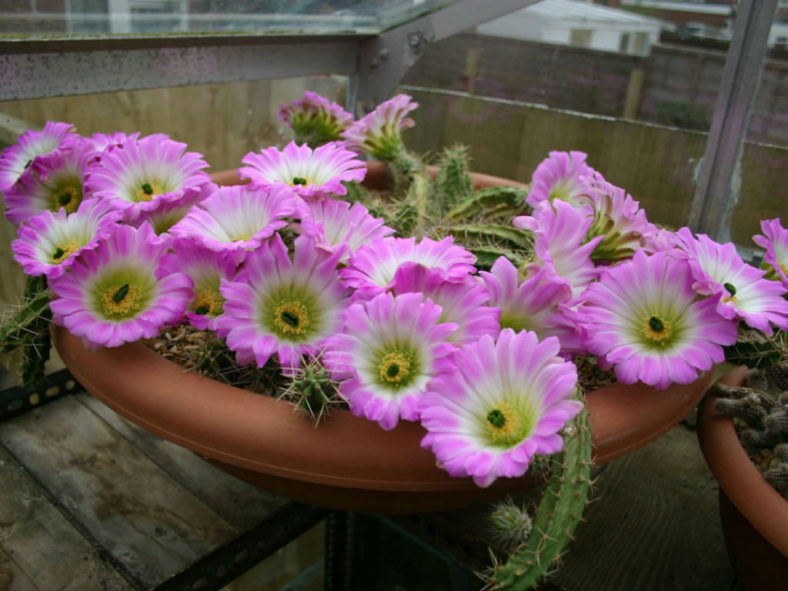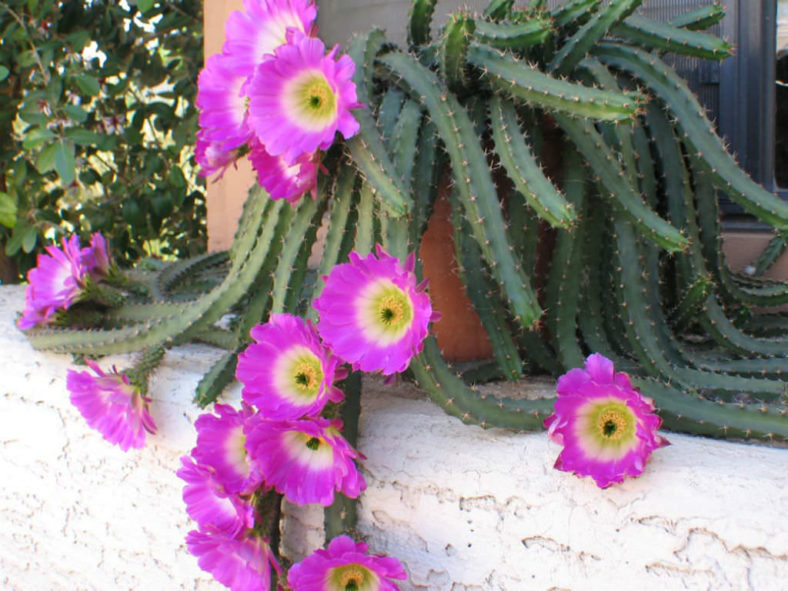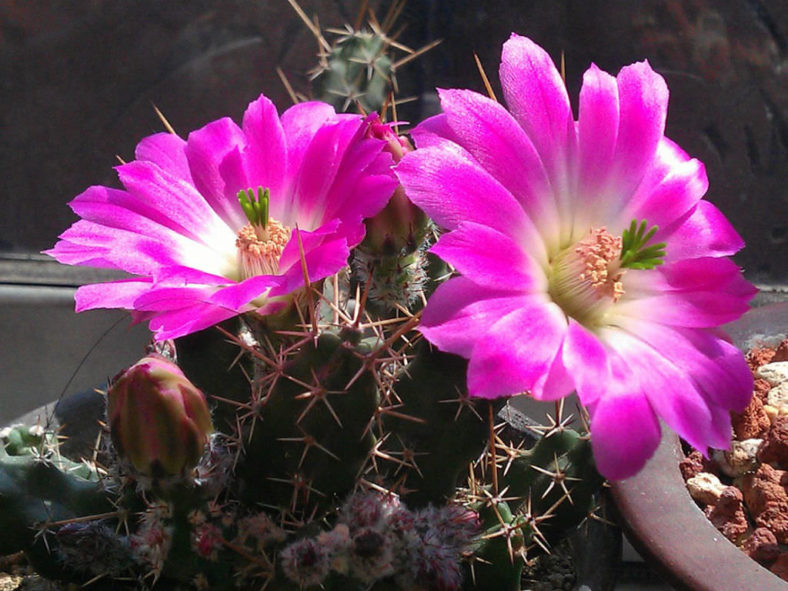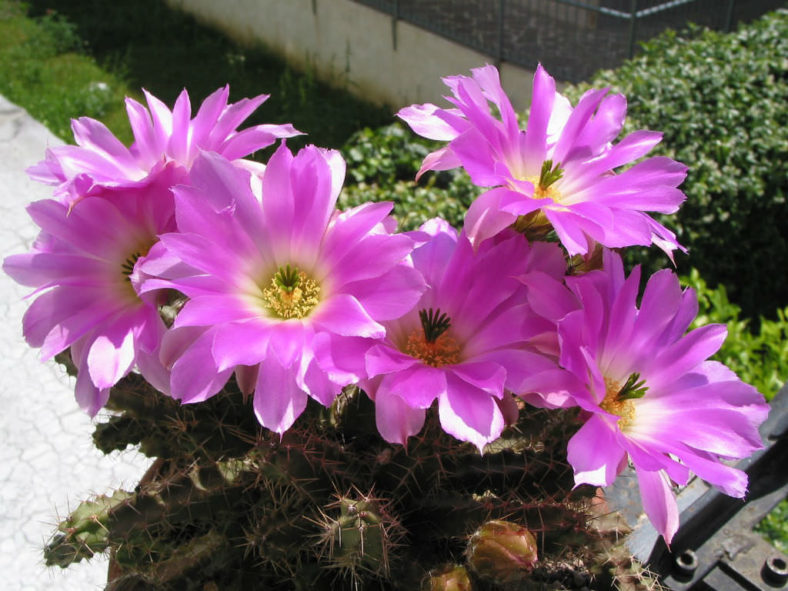Scientific Name
Echinocereus pentalophus (DC.) Lem.
Common Name(s)
Alicoche, Devil's Fingers, Dog Tail, Ladyfinger Cactus, Lady Finger Cactus, Lady-finger Hedgehog Cactus
Synonym(s)
Cereus pentalophus, Echinocereus pentalophus subsp. pentalophus
Scientific Classification
Family: Cactaceae
Subfamily: Cactoideae
Tribe: Pachycereeae
Genus: Echinocereus
Origin
Echinocereus pentalophus is native to the United States and Mexico. It occurs as a part of the desert scrubs that incorporate plants such as Agave lechuguilla and Hechtia species and grassy, rocky plains from San Luis Potosí through Northeastern Mexico and into the southern Rio Grande Valley in southeastern Texas.
Description
Echinocereus pentalophus is a clump-forming cactus with weak, erect, soon decumbent stems with 4 to 5 ribs lined with clusters of 3 to 9 spines. The stems vary in color from yellowish-green or dark green to reddish-purple. They are up to 2 feet (60 cm) long and 2.4 inches (6 cm) in diameter. Spines are usually very stiff and straight. They are yellowish, tan, ashy white to dark gray or pale pink and have dark tips. Each areole bears 3 to 8 radial spines and one sometimes absent central spine. The radial spines are up to 1.5 inches (3.7 cm) long. The central spine is up to 2.4 inches (6 cm) long.
This cactus produces many brilliant pink or magenta flowers with a white or yellow throat. They are funnel-shaped, up to 4 inches (10 cm) long, up to 6 inches (15 cm) in diameter, and appear in spring. Fruits are green with white pulp and black seeds.

Hardiness
USDA hardiness zones 9a to 11b: from 20 °F (−6.7 °C) to 50 °F (+10 °C).
How to Grow and Care
If you can successfully grow other globular cacti, you can most likely grow Echinocereus well. One of the key factors in success with these is avoiding any hint of wet soil. Because their root systems are weak, they are especially prone to root rot, eventually killing your plant. Otherwise, they thrive on a program of intense, bright light, little water, and a steady diet of light fertilizer. These cacti are vulnerable to mealybugs and aphids.
Echinocereus are slow-growing cacti that should only need repotting every other year or so. You can prolong the time to repotting by removing plantlets and potting them up in their own pots. When repotting a cactus, carefully remove it from its pot and remove any clumped soil. These plants tend to be shallow-rooted with weak root systems, so take care not to damage their roots.
Learn more at How to Grow and Care for Echinocereus.
Subspecies
Links
- Back to genus Echinocereus
- Succupedia: Browse succulents by Scientific Name, Common Name, Genus, Family, USDA Hardiness Zone, Origin, or cacti by Genus
Photo Gallery
Click on a photo to see a larger version.



